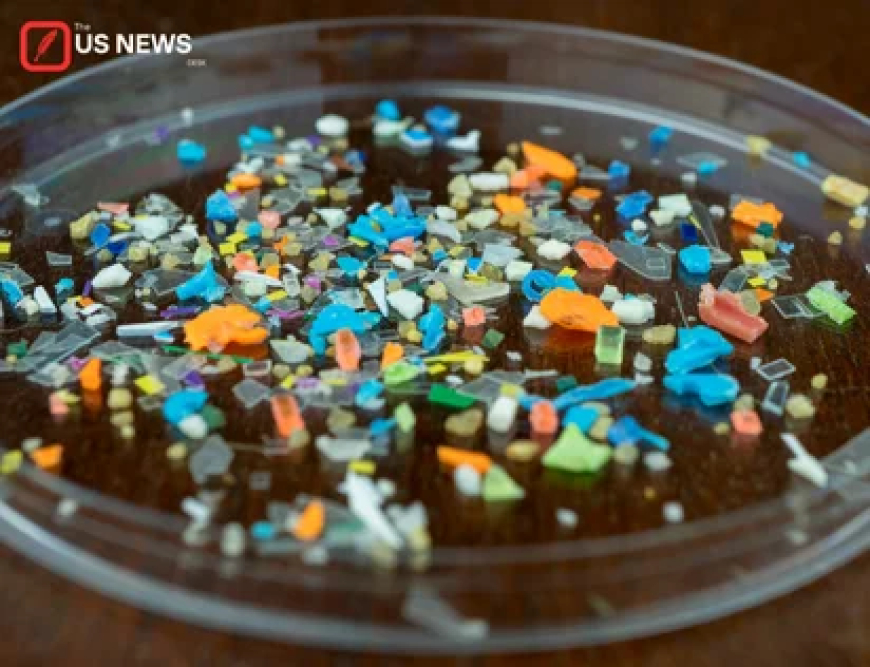Microplastics in the Food Chain: Unraveling the Long-Term Risks to Human Health
New studies reveal how microplastics in the food chain may impact human health. Learn about risks, measurement breakthroughs, and regional hotspots of contamination.

WASHINGTON, D.C. — Microplastics, once dismissed as an environmental nuisance, are now emerging as a silent threat to human health. New scientific studies are revealing how tiny plastic particles—some smaller than the width of a human hair—are entering the food chain, accumulating in tissues, and potentially altering long-term health outcomes. With improved detection methods and fresh regional data, researchers are piecing together a disturbing picture of exposure risks that extend far beyond oceans and beaches.
What Are Microplastics and How Do They Enter the Food Chain?
Microplastics are defined as plastic fragments less than 5 millimeters in size. They originate from industrial waste, synthetic textiles, packaging breakdown, and even tire wear on roads. Once released, these particles move through waterways and soils, ultimately entering plants, livestock, and seafood consumed by humans.
A 2025 study published in Environmental Science & Technology confirmed microplastics in staple foods like rice, wheat, and vegetables, raising concerns that the exposure pathway is more widespread than previously thought. Seafood remains a significant source, but terrestrial crops and meat products are now firmly under scrutiny.
Health Risks: What the New Studies Reveal
While short-term effects of microplastic ingestion remain under debate, the long-term risks are gaining clarity. Scientists now warn that microplastics may trigger chronic inflammation, disrupt hormone regulation, and impair immune function. Laboratory experiments suggest certain plastics release chemicals that mimic endocrine disruptors, potentially influencing fertility and metabolism.
In one pioneering project at Johns Hopkins University, researchers demonstrated that nanoplastics could cross the blood-brain barrier in mice, hinting at potential neurological consequences for humans. Other work links microplastic accumulation to cardiovascular stress and cellular damage.
“Microplastics are not just inert fragments,” explained Dr. Sarah Mendoza, a toxicologist at Stanford University. “They act like sponges, absorbing heavy metals and chemicals from the environment, which are then carried into our bodies. The concern is not only about the plastic itself, but what it brings along.”
Breakthroughs in Measurement: Seeing the Invisible
For years, the biggest challenge was detecting microplastics at the scale relevant to human health. Traditional methods could only capture particles visible under light microscopy, missing the smaller, more dangerous nanoplastics.
That’s changing. Raman spectroscopy and pyrolysis-gas chromatography mass spectrometry (Py-GC/MS) are allowing scientists to identify plastic polymers at nanometer scales. New wearable sampling devices are also helping researchers track how much microplastic people inhale daily in urban environments.
The World Health Organization recently highlighted these advances, urging governments to adopt standardized monitoring protocols to better compare exposure levels across regions.
Regional Hotspots: Where Risks Are Highest
Emerging research points to several hotspots of concern:
-
Midwest United States: Agricultural soils treated with sewage sludge show some of the highest concentrations of microplastics, which then leach into crops.
-
East Asia: High seafood consumption in nations such as South Korea and Japan creates elevated exposure risks.
-
Mediterranean Basin: Known for heavy maritime traffic and densely populated coastlines, the region records among the highest levels of microplastic contamination in fish.
-
Urban Centers Worldwide: Airborne microplastics are increasingly recognized as a threat, with cities like London, New York, and Delhi reporting measurable amounts in atmospheric dust.
Regional studies matter because they tie exposure to cultural diets and local industries. For instance, Illinois-based research found that residents consuming freshwater fish had nearly double the average microplastic intake compared to non-fish eaters.
Policy and Public Response
Governments are under growing pressure to act. The European Union has already proposed restrictions on intentionally added microplastics in cosmetics and detergents. Meanwhile, U.S. lawmakers are considering legislation to fund long-term studies and strengthen regulations on single-use plastics.
Nonprofits and academic institutions are also playing a role. The Plastic Health Coalition is pushing for global standards on microplastic monitoring, while local groups in California and Illinois are conducting citizen-led sampling projects.
Some industry leaders argue that innovation will play a role in mitigating the problem. Biodegradable alternatives and closed-loop recycling systems are being touted as long-term solutions, though experts caution these are not quick fixes.
The Road Ahead
The story of microplastics is still being written. The science is young, the data incomplete, and the health effects not yet fully understood. But the mounting evidence is clear enough to raise alarms: humans are ingesting and inhaling microplastics daily, and the consequences may span generations.
As technology improves and more regional studies surface, the pressure on governments, industries, and individuals to respond will only intensify. If the 20th century was defined by the rise of plastic, the 21st may be remembered for the global struggle to contain its legacy.
What's Your Reaction?
 Like
0
Like
0
 Dislike
0
Dislike
0
 Love
0
Love
0
 Funny
0
Funny
0
 Angry
0
Angry
0
 Sad
0
Sad
0
 Wow
0
Wow
0

































